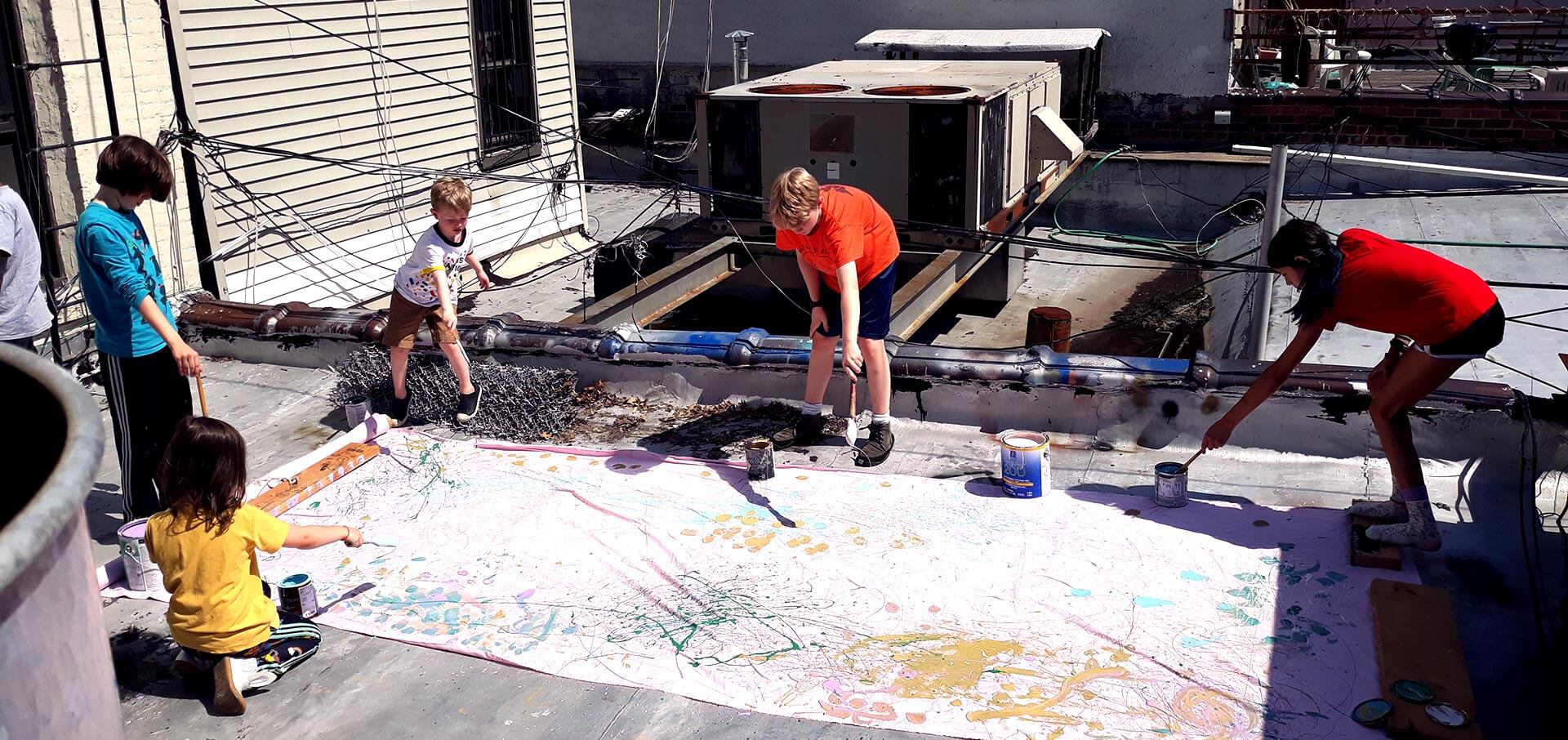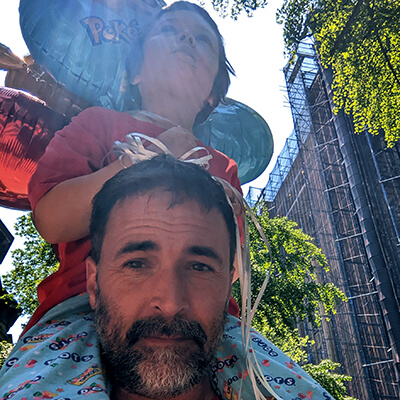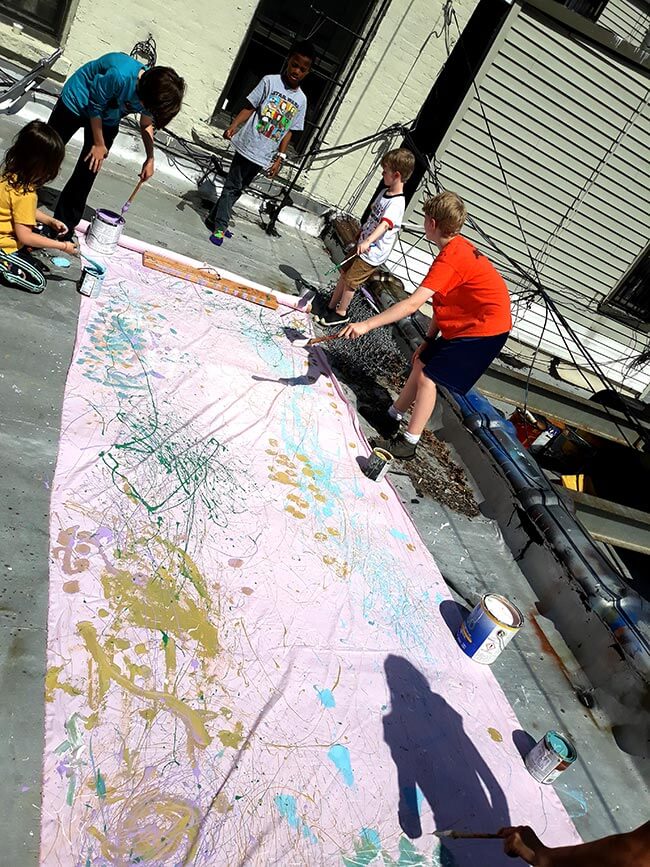
I have worked with a young person named Shaylem for a few years. I have known him long enough to know his likes and dislikes and to develop, I believe, a great sense of trust in one another. One day this last fall I sat next to Shaylem in our center’s library space and he offhandedly remarked to me something along the lines of, “Mondays are boring.” I agreed that I too was bored on Mondays and, feeling confident that Shaylem trusted me to make suggestions, began to list off whatever ideas came to mind of ways to become unbored. I knew that Shaylem tended to be up for anything, liked a good story, and liked art. I have a degree in art history and had been wanting to run a class on the subject for years. And so, I was secretly excited when he said he was interested in the idea of an art history class.
“We could have an introduction to art history class, starting way back with ancient cave paintings,” I said, “And we could work our way up to the present time.” Shaylem was enthusiastic about the idea, and I suggested that we should poll the space to see if anyone else wanted to join.
The following week, along came Shaylem’s little brother Harlan, who was probably four or five, my two sons Oliver, who was ten at the time, and James, who was twelve, and Ajaya, who was about seven. It was plenty for a class. We agreed to meet every Monday morning at 10am for the entire school year. About a month in James bailed out of the class, admitting he was curious and tried it because I was his dad, but that it was boring. Once or twice I almost lost Oliver somewhere in the middle ages, but he and the rest of the group ultimately stuck it out for the full school year. I would prepare a pretty straight up art history lesson each week, trying my best to cover it all, to be accurate, and to keep it entertaining for a group of kids from about four to 11 years of age.
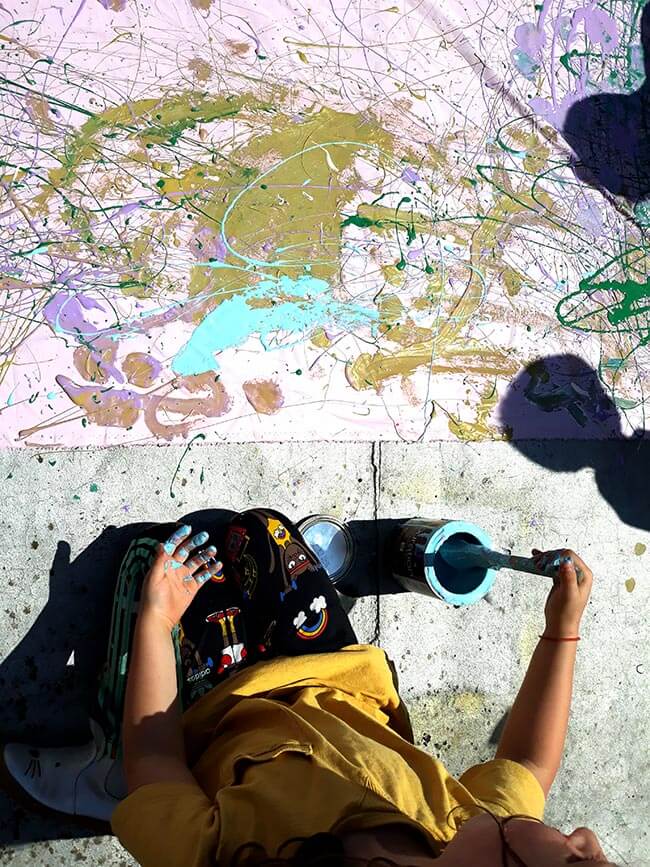
They would sit with sandwiches and sketch pads and listen to my stories. And then we discussed it all: making our own theories on how Stonehenge was built, remarking on how the Protestant reformation gave the start to depictions of peasant life, talking about gender roles depicted in nineteenth century art, and about the influence of Black folk art in the United States in the early twentieth century.
The week before I left for Istanbul we had made our way up to Abstract Expressionism. I showed the class a few videos of Jackson Pollock making his famous splatter paintings. “That looks like so much fun!” remarked someone. The others agreed and suggested that we should try making our own splatter paintings.
“I know the paint store downstairs has given gallons of paint to us for painting the walls of the center...” I said. Their eyes widened, as they immediately caught on to what I was suggesting. “And I’m pretty sure we have some large fabric in the art room,” I added. Within moments, we were down the steps of our center and into the paint store conveniently located a door down.
We got the look I seem to always get when entering an establishment with a band of young dreamers: part suspicion, part fondness. “We’re from the homeschool coop upstairs,” I explained. The salesperson nodded. “I know sometimes you have paint that has been returned to the store,” I said, “And you’ve given it to us for little money before...” The salesperson smiled.
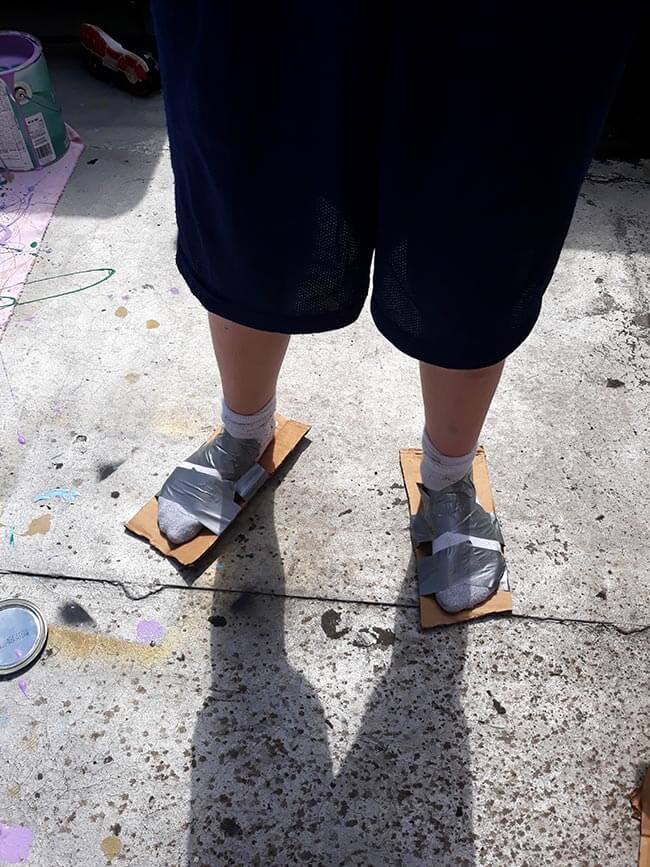
“We have a few dozen gallons back there,” he pointed. We went and picked out some ochres and a teal and deep purple and whatever else we could find. He charged us a dollar plus tax for ten gallons of paint.
Back upstairs we ran. I grabbed a bunch of half inch to two inch paint brushes from the art room and onto the roof of the adjacent building we went, climbing out of the bathroom window to get there. I pinned down a piece of fabric that was about four feet by 12 feet onto the roof using several of the gallon paint buckets.
It did not take long after popping the lids to realize that we were about to get REALLY messy with exterior house paint. I surveyed the children. I knew most of their parents, they would... probably be cool with a set of ruined clothes and children with paint that would... eventually come off.
Then they started running back into the center with paint covered shoes to grab materials. It was at this time that I believe I invented the duct tape and cardboard shoes (patent pending). They took to the task so seriously, making sure to get a balanced composition, requesting I move the heavy gallons of paint to different portions of the canvas every so often, each artist rotating around the canvas quietly and methodically.
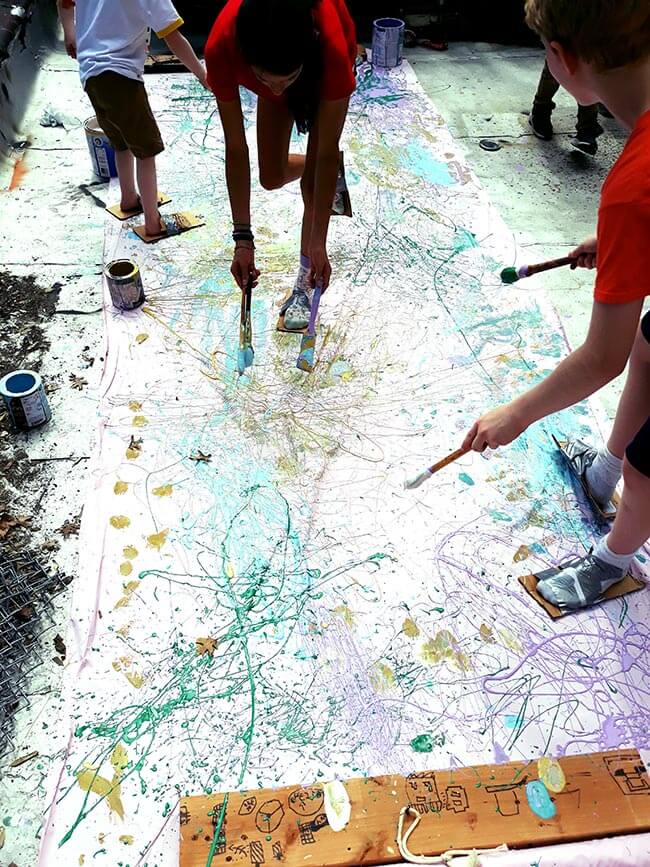
It didn’t take long before other children were leaning out windows, “Whatcha doin?!” they cried excitedly, adding, “Can I join!?” Soon enough I had a dozen kids on a roof covered in house paint tossing paint every which way.
I overheard one kid who was not in the art history class ask one who was, “What are we doing?”
“It’s Abstract Expressionism,” the other responded, then paused and added, “it’s Jackson Pollock.”
We let the painting dry on the roof for the rest of the afternoon and were excited to later find pigeon feathers dried into it. A week later, one of the other facilitators and two of the young artists helped me stretch it. The canvas still hangs proudly on one of the largest walls in our center.
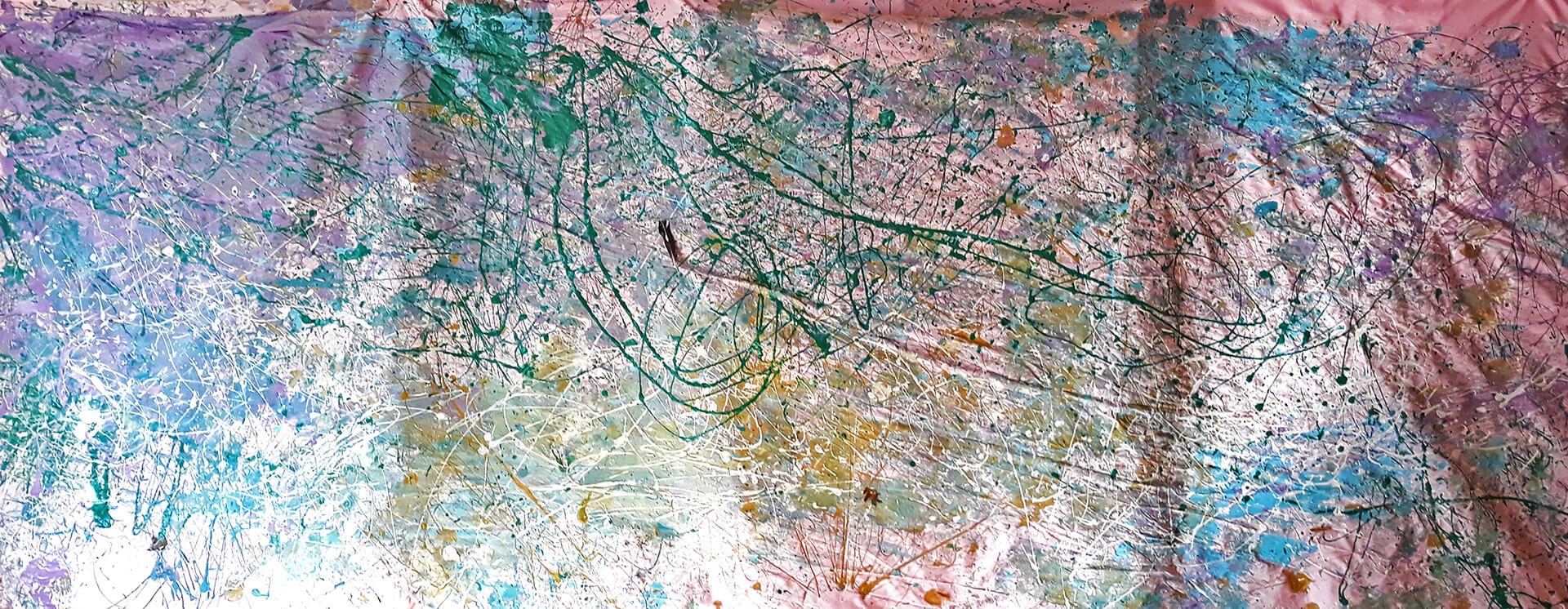
If you enjoyed this article and feel called to give back to ASDE, here are ways you can support our work:
- Donate money
- Share our content with others! Click one of the buttons above to easily share on Twitter, Facebook, or email.
- Consider becoming a Contributor for Tipping Points
Tipping Points Magazine amplifies the diverse voices within the Self-Directed Education movement. The views expressed in our content belong solely to the author(s). The Alliance for Self-Directed Education disclaims responsibility for any interpretation or application of the information provided. Engage in dialogue by reaching out to the author(s) directly.


